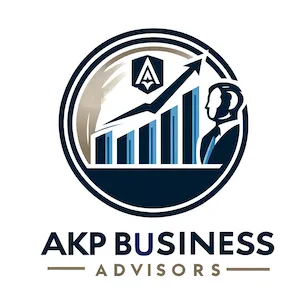IT'S NOT JUST LEADS...
IT'S YOUR BUSINESS HEALTH!
WHY US
WE PRODUCE RESULTS
Our job is to be experts in systems that promote a healthy business... including employee benefits as well as marketing, and specifically local marketing, that leverages technology to achieve maximum results, so that our clients can focus on what they do best – running their business.
We help local businesses reach their growth potential and dominate their markets by implementing proven business systems.
WHAT WE DO
SERVICES
We Help Businesses Grow by Implementing and Optimizing Systems to Improve Business Health, Cash Flow and Marketing ROI.
Attract & Retain Top Tier Employees
Find out how the Essential Health Program delivers comprehensive health benefits to your business at a zero-net additional cost to both employers and employees
Put A.I. to Work for You
Wondering how AI can help your business? Learn how AI can drive qualified customers to you by answering key questions about your business.
Call our A.I. Jessica to experience how she can work for you.
817-674-9990

The Step-by-Step Process to Create a Content Calendar That Aligns With Your Business Goals
The Step-by-Step Process to Create a Content Calendar That Aligns With Your Business Goals
Creating a content calendar is a game-changer for aligning your content strategy with your business goals. It’s not just about getting organized; it’s about delivering consistent, high-quality content that keeps your audience engaged and coming back for more. Let’s dive into a step-by-step process to create a content calendar that will help you hit your business objectives out of the park.
The Importance of a Content Calendar
What is a Content Calendar?
A content calendar, also known as an editorial calendar, is essentially a schedule that outlines when and where you'll publish your upcoming content. It can include everything from blog posts and social media updates to email newsletters and video content. Think of it as your strategic playbook for content marketing.
Why Do You Need One?
Having a content calendar is crucial for several reasons. First, it ensures a steady stream of content, which is key to maintaining your audience’s interest. It also helps you strategically plan around important business dates and allocate resources effectively. Plus, it gives you a comprehensive view of your content strategy, ensuring everything aligns with your overall business goals.
9 Steps to Create Your Content Calendar
Step 1: Define Your Business Goals
Start by clearly defining what you want to achieve. Are you aiming to boost brand awareness, drive sales, or increase community engagement? Your content should be crafted to meet these objectives.

Step 2: Analyze Your Audience
Knowing your audience inside and out is vital. Conduct thorough audience research to understand their preferences, pain points, and the type of content that resonates with them.
Step 3: Audit Your Existing Content
Take inventory of your current content. Identify what’s working, what’s not, and where the gaps are. This will help you maximize your existing content and fill in the gaps to meet your goals.
Step 4: Plan Your Content Types
Based on your goals and audience insights, decide what types of content you’ll create. This could include blog posts, videos, infographics, podcasts, and more.
Step 5: Decide on Publishing Frequency
Figure out how often you’ll publish new content. This will depend on your capacity to produce content and your audience’s appetite for it.
Step 6: Choose the Right Tools
Pick a tool or platform that fits your workflow for managing your content calendar. Some prefer simple spreadsheets, while others opt for specialized content calendar software.
Step 7: Populate Your Calendar
Start filling in your content calendar with ideas, topics, and titles. Don’t forget to mark key dates that are important for your business.
Step 8: Assign Tasks and Deadlines
Delegate tasks to your team members and set deadlines. This ensures accountability and keeps your content strategy on track.
Step 9: Review and Adjust
Regularly review your content calendar and make adjustments as needed. Stay flexible and be ready to pivot based on what’s working and what’s not.

Implementing Your Content Calendar
Tips for Success
Be realistic: Don’t bite off more than you can chew.
Stay flexible: Be ready to adapt to last-minute changes or trends.
Measure success: Use data to refine your strategy over time.
Common Pitfalls to Avoid
Overloading your calendar: Don’t plan more than your resources allow.
Ignoring audience needs: Ensure your content aligns with what your audience wants and your business goals.
Neglecting updates: Regularly review and update your calendar.
Conclusion
Creating and maintaining a content calendar is a dynamic, ongoing process. It’s not just a scheduling tool; it’s a strategic asset that can significantly boost your ability to meet your business goals through content marketing. By carefully planning your content, ensuring alignment with your business objectives, understanding your audience, and
remaining flexible, you can create a content calendar that supports and enhances your marketing strategy.
Remember, the ultimate goal is to produce content that resonates with your audience and drives action, whether it’s engagement, sales, or brand loyalty. Keep refining your strategy based on performance data and feedback, making sure your content calendar evolves with your business.



